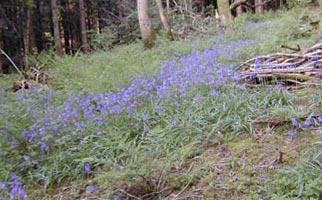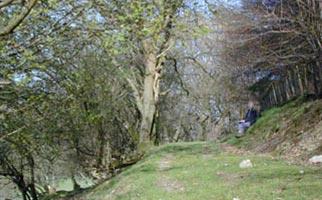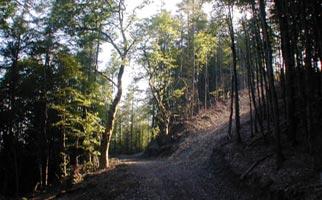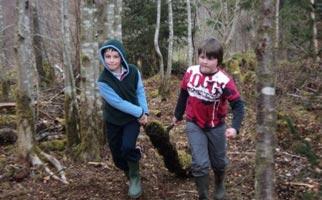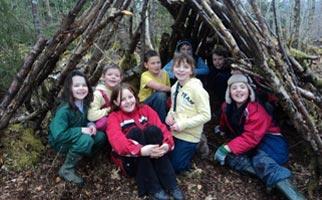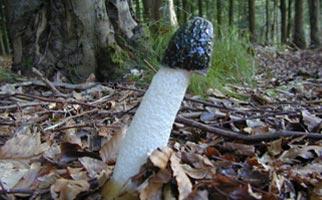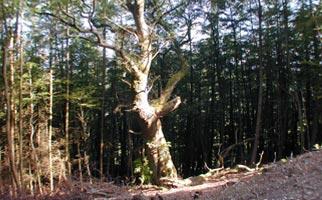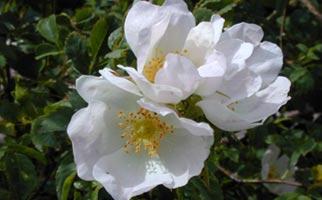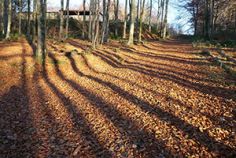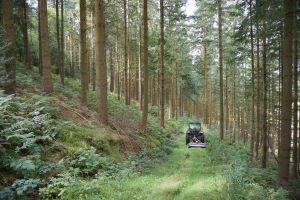Our Forest
Our forest covers 29 hectares (about 70 acres) and lies on the north-west facing slope of a valley that runs up to Lake Vyrnwy in the Berwyn Mountains in Mid-Wales. It is an equal mix of conifers and broadleaves with 35 different species of tree. This has been certified by Grown in Britain (GIB-F-WS-5068) as responsibly managed.
In 2021, we won the Duke of Cornwall Award for a Resilient Multi-purpose forest having come first in the Royal Forestry Society's Excellence in Forestry Competition for Wales and Northern Ireland. The Duke of Cornwall at the time was better known as Prince Charles, Prince of Wales - so this is a great honour.
We hold annual open days to raise funds for Action for Children through a small entrance charge and the sale of refreshments. Keith and Decia, his late wife, have been actively involved with their work for many years. On the open days there are the ever-popular guided walks in the afternoon to look at a wide variety of habitats and interesting aspects of this intriguing Welsh hillside. Please phone Keith on 07968 095645 if you would like further details. There will be direction signs from the centre of Llanfyllin.
The forest is an ancient woodland and we have estate maps showing that it has been covered with trees at least since 1800. The indicator plant species present suggest that it has been woodland for very much longer than that. Small areas, particularly along the stream boundaries are ancient semi-natural woodland although most of the wood was replanted between 1951 and 1965. However, there are around sixty-six large veteran Beech, Oak, Holly and Sweet Chestnut trees many of which are thought to date from around 1800.
The elevation of the wood ranges from 200m (650 ft) and 320m (1030 ft) so that much of the woodland is on steep slopes. While this provides an eye catching vista for those driving down to Llanfyllin from Lake Vyrnwy, it is a challenging setting for working the wood.
The principal timber species are Beech, Douglas fir, Oak, Larch, Noble fir, Norway spruce, Sweet chestnut, Ash and Alder. Over 350 species of plant, fungi and bryophytes have been recorded in the past few years and we are looking after the wood in ways that ensures the health of this rich diversity.
We manage the woodland and harvest trees so as to maintain the canopy cover without felling large blocks at a time. The hardwood - mainly Beech and Oak - is being thinned a bit at a time for firewood. The softwood - mainly Larch, Douglas fir and Norway spruce - is being thinned selectively to make our log stores.
By actively managing the wood and harvesting the timber every year, we are able to generate a revenue which enables us to look after the woods and to encourage new growth in place of the trees removed. It also provides valuable habitats for the wide variety of wildlife that lives in the woodland. We have over 80 bird boxes throughout the wood offering nest sites for a number of species, including Pied Flycatchers and the more secretive Spotted Flycatchers. Buzzards and Ravens regular fly overhead.
Since the beginning of 2012, a Forest School site in the wood has been working with a several local schools and a number of children who are educated at home. This has given them invaluable experience of working together and developing new skills.
When we acquired the wood in 2001, much of it has been neglected for many years and parts of the wood were in poor condition. Some it had not been touched since those areas was planted in 1951. By the beginning of 2022, we had worked our way through the whole wood and bringing it up to condition and removing a lot of poorly formed trees and created space and light for the remainder. We are now growing timber of much higher quality.
We are also high pruning a young Douglas fir plantation that was planted in 1995. This gives clear stems up to 5m to provide long lengths of knot-free timber when the crop is harvested in another 30 to 40 years' time.
The bottom picture shows us mowing the roads through the Douglas fir plantation planted in 1965.


